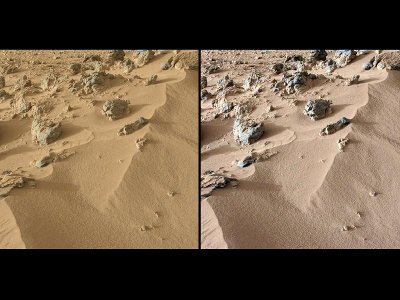
The Mars Rover Curiosity has completed some analyzes of Martian soil using the instrument called Chemistry and Mineralogy (CheMin). It turned out that the soil is similar to the basaltic one of volcanic origin of the Hawaii islands on the Earth.
The CheMin uses X-rays to illuminate the samples and from their reactions it can understand their chemical composition. The X-rays are diffracted by the sample to specific directions and angles and their intensities are different for the various materials. The observation of the diffraction thus allows to build a three-dimensional map of the elements present in the sample analyzed.
In the case of Gale Crater on Mars, where the Mars Rover Curiosity is working, the scientists had collected various clues and had some idea which was partly the result of deductions on the soil composition. The analysis carried out by Curiosity has obviously allowed them to have much more complete data which also include new identifications of materials.
The ancient rocks in the Gale Crater suggest a transition from a wet to a dry environment. Some of them, such as the conglomerates studied by the Mars Rover Curiosity a few weeks ago, are in fact typical of environments in which there is a water flow. In more recent layers such as the one containing the sample analyzed with the CheMin there are materials more typical of environments where there’s little water. This confirms the hypothesis that a few billion years ago Mars looked more like the Earth.
It’s one of the primary goals of the Mars Rover Curiosity’s mission to assess the environmental conditions on Mars not only today but also in the past. The X-ray diffraction technique is a standard in the field of mineralogy on Earth and on Mars it allows to identify minerals present in a sample more accurately than any other methods used on the red planet.
[ad name=”AmazonDocumentary”]
In the past, an instrument such as the CheMin would’ve been too big to fit into a rover but technological advances made over the years at NASA’s Ames Research Center in Moffett Field, California, have helped create a more compact one. It was therefore possible to equip the Mars Rover Curiosity of this very valuable instrument for his mission.
The technological advances made by NASA have already had applications on Earth. In fact, they made it possible to design new portable equipment to carry out mineralogical research also useful in the analysis of archeological objects and even in the screening of counterfeit pharmaceuticals.
As it always happens in these cases, technological progress has led to some interesting discoveries on Mars but at the same time it’s finding useful applications on the Earth.


Permalink